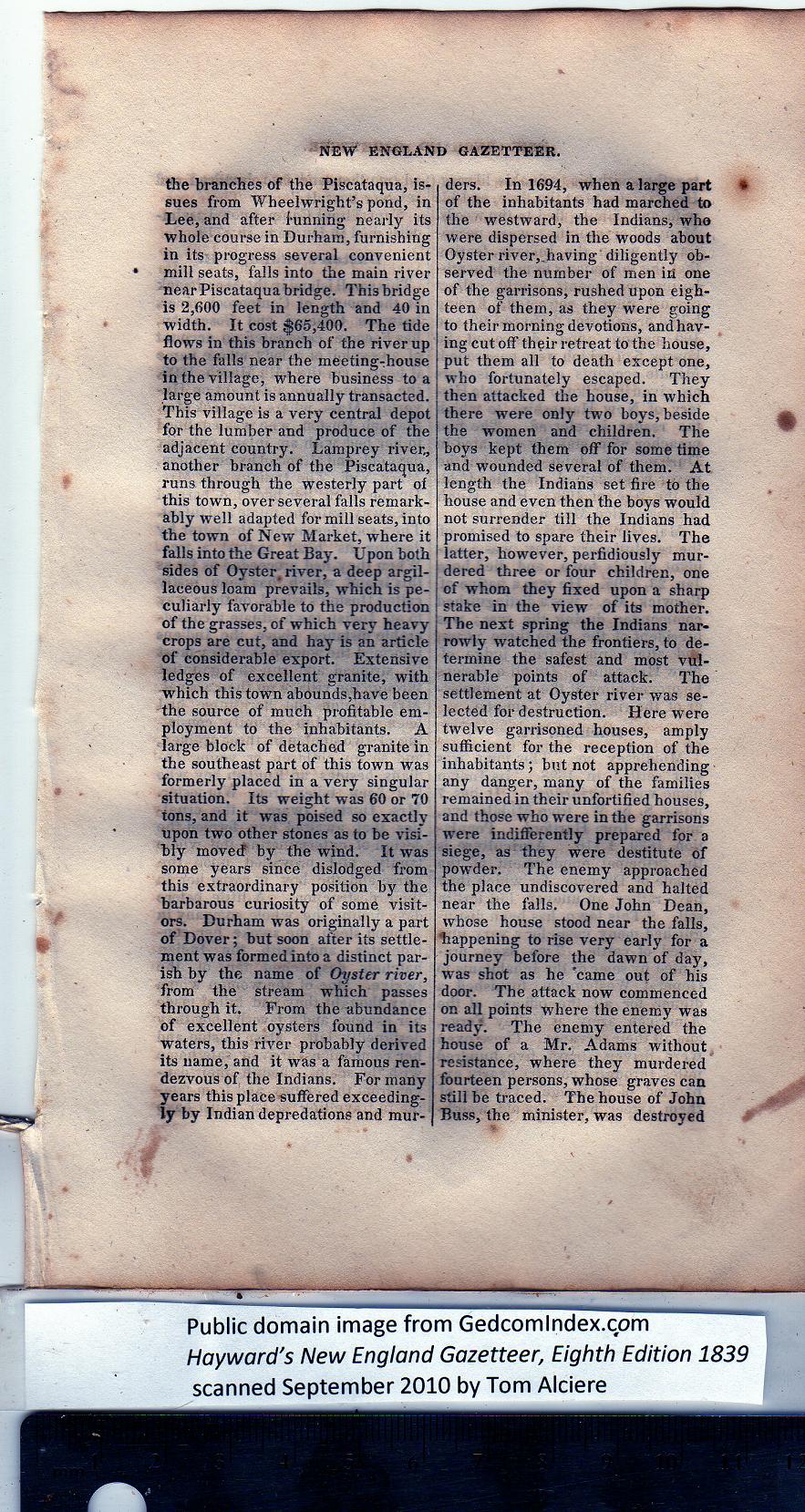|
the branches of the Piscataqua, is-
sues from Wheelwright’s pond, in
Lee, and after funning nearly its
whole course in Durham, furnishing
in its progress several convenient
mill seats, falls into the main river
near Piseataqua bridge. This bridge
is 2,600 feet in length and 40 in
width. It cost $65,400. The tide
flows in this branch of the river up
to the falls near the meeting-house
in the village, where business to a
large amount is annually transacted.
This village is a very central depot
for the lumber and produce of the
adjacent country. Lamprey river,,
another branch of the Piscataqua,
runs through the westerly part of
this town, over several falls remark-
ably well adapted for mill seats, into
the town of New Market, where it
falls into the Great Bay. Upon both
sides of Oyster, river, a deep argil-
laceous loam prevails, which is pe-
culiarly favorable to the production
of the grasses, of which very heavy
crops are cut, and hay is an article
of considerable export. Extensive
ledges of excellent granite, with
which this town abounds,have been
the source of much profitable em-
ployment to the inhabitants. A
large block of detached granite in
the southeast part of this town was
formerly placed in a very singular
situation. Its weight was 60 or 70
tons, and it was poised so exactly
upon two other stones as to be visi-
bly moved by the wind. It was
some years since dislodged from
this extraordinary position by the
barbarous curiosity of some visit-
ors. Durham was originally a part
of Dover; but soon after its settle-
ment was formed into a distinct par-
ish by the name of Oyster river,
from the stream which passes
through it. From the abundance
of excellent oysters found in its
waters, this river probably derived
its name, and it was a famous ren-
dezvous of the Indians. For many
years this place suffered exceeding-
ly by Indian depredations and mur- |
ders. In 1694, when a large part *
of the inhabitants had marched to
the westward, the Indians, who
were dispersed in the woods about
Oyster river,.having diligently ob-
served the number of men in one
of the garrisons, rushed upon eigh-
teen of them, as they were going
to their morning devotions, andhav-
ing cut off their retreat to the house,
put them all to death except one,
who fortunately escaped. They
j then attacked the house, in which
there were only two boys, beside
the women and children. The
boys kept them off for some time
and wounded several of them. At
length the Indians set fire to the
house and even then the boys would
not surrender till the Indians had
promised to spare their lives. The
latter, however, perfidiously mur-
; dered three or four children, one
of whom they fixed upon a sharp
stake in the view of its mother.
The next spring the Indians nar-
rowly watched the frontiers, to de-
termine the safest and most vul-
nerable points of attack. The
settlement at Oyster river was se-
lected for destruction. Here were
twelve garrisoned houses, amply
sufficient for the reception of the
inhabitants; but not apprehending
any danger, many of the families
remained in their unfortified houses,
and those who were in the garrisons
were indifferently prepared for a
siege, as they were destitute of
powder. The enemy approached
the place undiscovered and halted
near the falls. One John Dean,
whose house stood near the falls,
happening to rise very early for a
journey before the dawn of day,
was shot as he 'came out of his
door. The attack now commenced
on all points where the enemy was
ready. The enemy entered the
house of a Mr. Adams without
resistance, where they murdered
fourteen persons, whose graves can
still be traced. The house of John
Buss, the minister, was destroyed |
